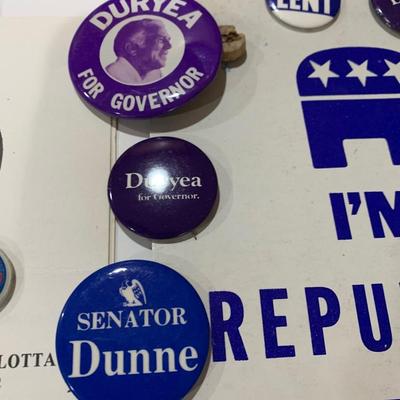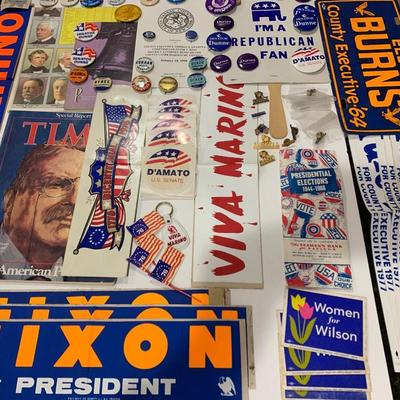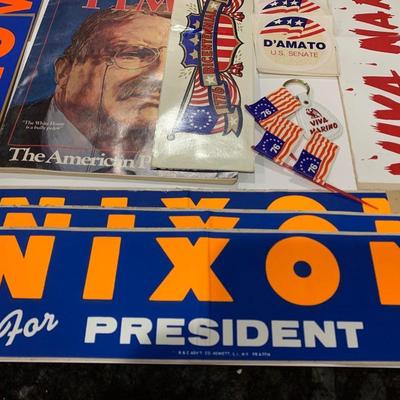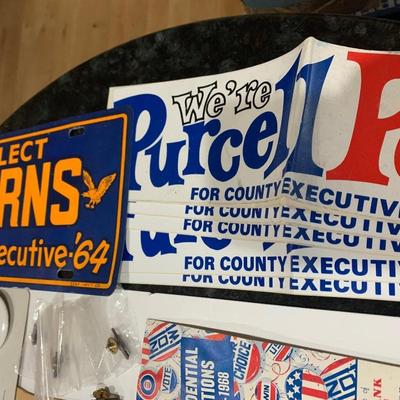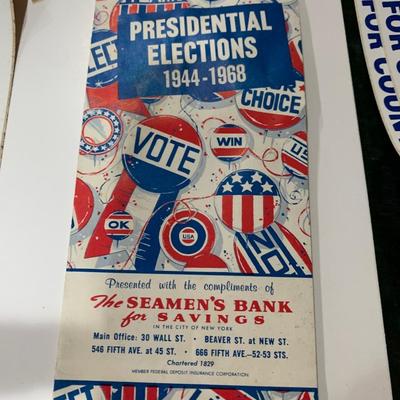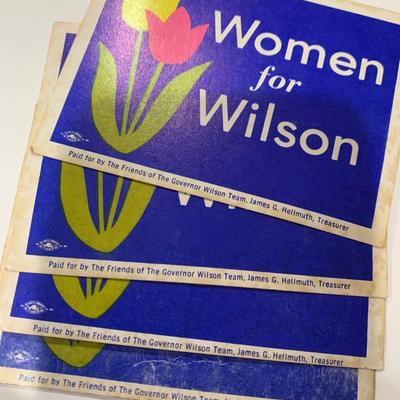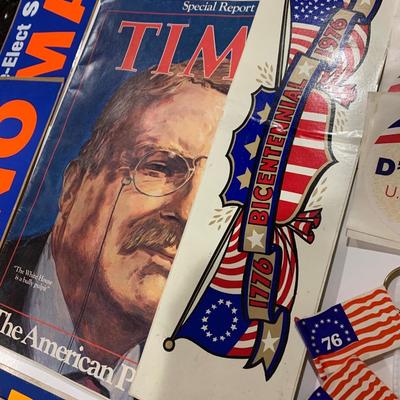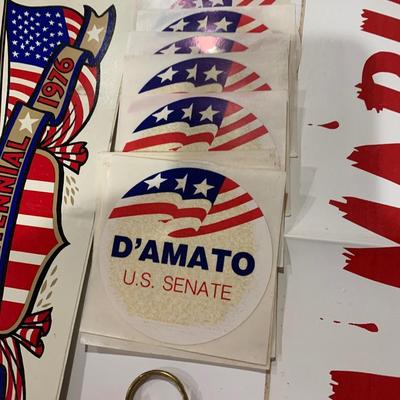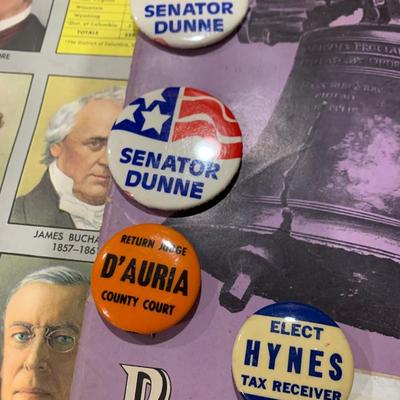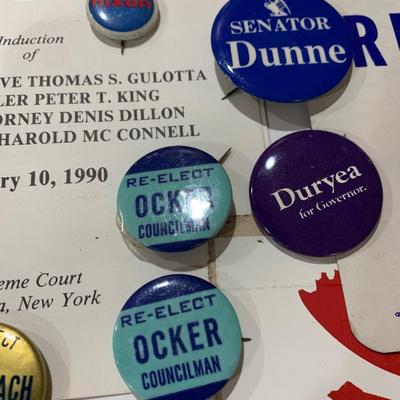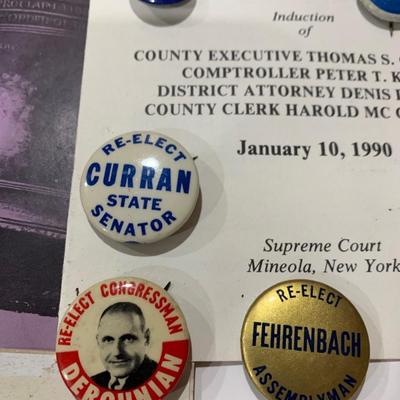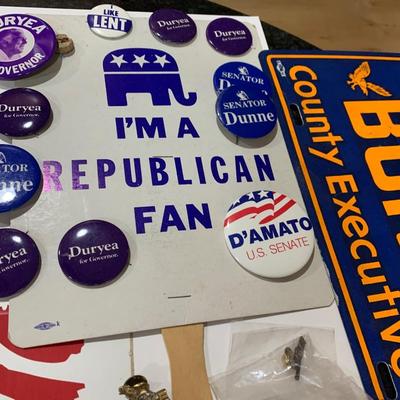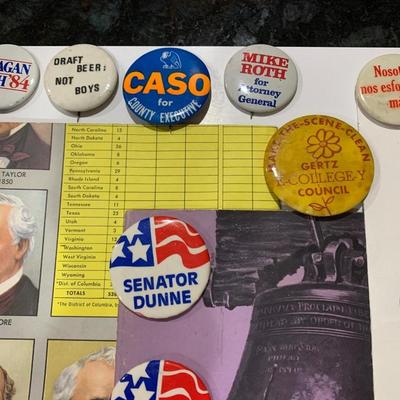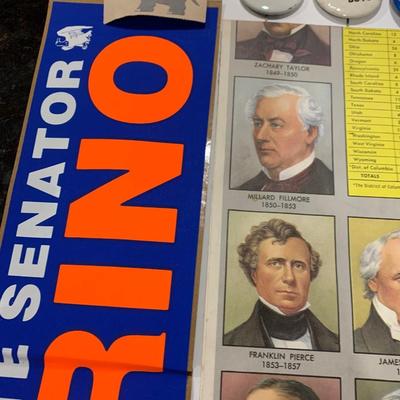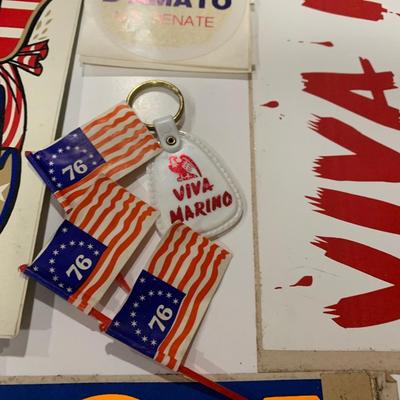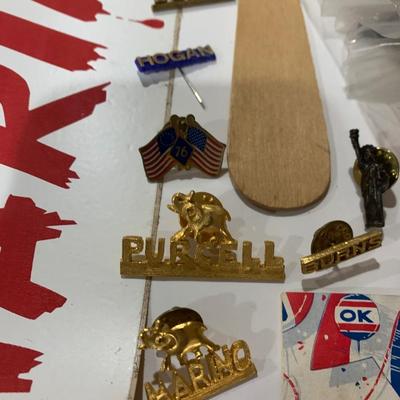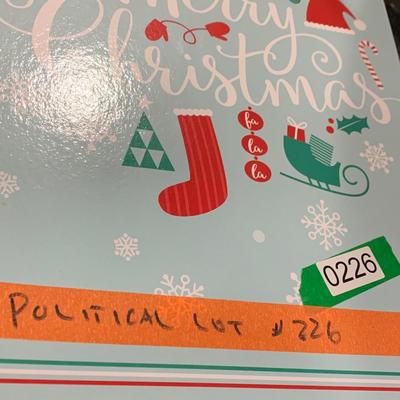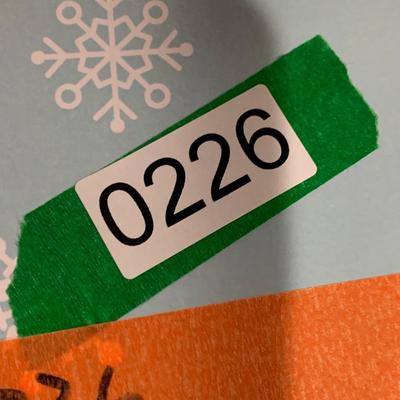Advertisement
Estate Sale Photo(s) Around Clinton, MD 20735
11,847 estate sale photo(s) currently listed near 20735 (Clinton, Maryland)
-

Clean, complete set of 60 3D NFL cards from the 70s from Kellogg's - some still even bound together. Buying “as is, as found” in this wonderful estate. NO BUYERS PREMIUMS OR CREDIT CARD FEES. All items start at just $10 and sell with NO RESERVE to the highest bidder. All bids are a binding contract to pay, pick-up, or request shipping and all sales are final. Any abandoned merchandise will be disposed of and purchase price not refunded, see complete “terms and conditions”. -
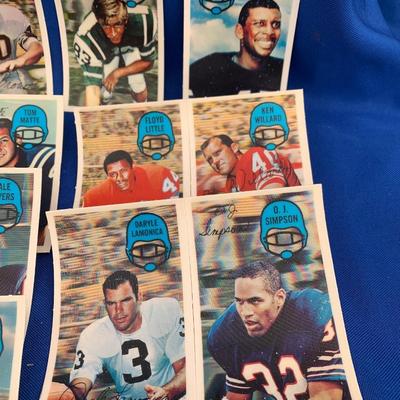
Clean, complete set of 60 3D NFL cards from the 70s from Kellogg's - some still even bound together. Buying “as is, as found” in this wonderful estate. NO BUYERS PREMIUMS OR CREDIT CARD FEES. All items start at just $10 and sell with NO RESERVE to the highest bidder. All bids are a binding contract to pay, pick-up, or request shipping and all sales are final. Any abandoned merchandise will be disposed of and purchase price not refunded, see complete “terms and conditions”. -
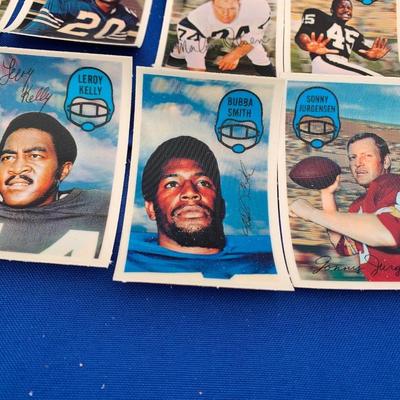
Clean, complete set of 60 3D NFL cards from the 70s from Kellogg's - some still even bound together. Buying “as is, as found” in this wonderful estate. NO BUYERS PREMIUMS OR CREDIT CARD FEES. All items start at just $10 and sell with NO RESERVE to the highest bidder. All bids are a binding contract to pay, pick-up, or request shipping and all sales are final. Any abandoned merchandise will be disposed of and purchase price not refunded, see complete “terms and conditions”. -
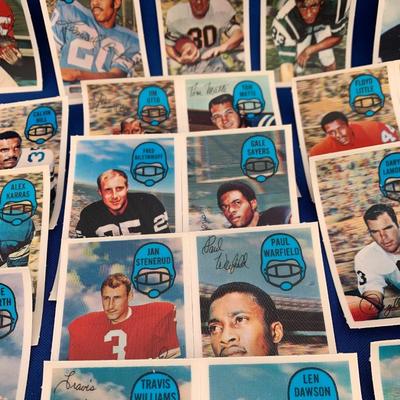
Clean, complete set of 60 3D NFL cards from the 70s from Kellogg's - some still even bound together. Buying “as is, as found” in this wonderful estate. NO BUYERS PREMIUMS OR CREDIT CARD FEES. All items start at just $10 and sell with NO RESERVE to the highest bidder. All bids are a binding contract to pay, pick-up, or request shipping and all sales are final. Any abandoned merchandise will be disposed of and purchase price not refunded, see complete “terms and conditions”. -
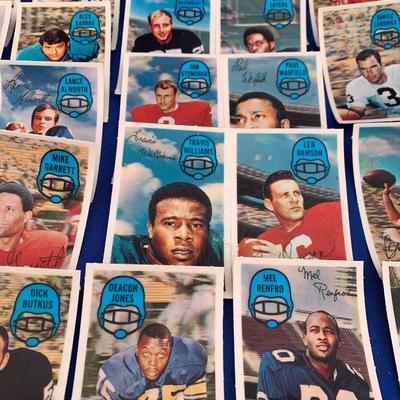
Clean, complete set of 60 3D NFL cards from the 70s from Kellogg's - some still even bound together. Buying “as is, as found” in this wonderful estate. NO BUYERS PREMIUMS OR CREDIT CARD FEES. All items start at just $10 and sell with NO RESERVE to the highest bidder. All bids are a binding contract to pay, pick-up, or request shipping and all sales are final. Any abandoned merchandise will be disposed of and purchase price not refunded, see complete “terms and conditions”. -
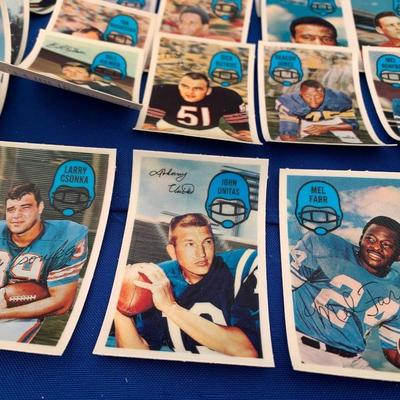
Clean, complete set of 60 3D NFL cards from the 70s from Kellogg's - some still even bound together. Buying “as is, as found” in this wonderful estate. NO BUYERS PREMIUMS OR CREDIT CARD FEES. All items start at just $10 and sell with NO RESERVE to the highest bidder. All bids are a binding contract to pay, pick-up, or request shipping and all sales are final. Any abandoned merchandise will be disposed of and purchase price not refunded, see complete “terms and conditions”. -

Clean, complete set of 60 3D NFL cards from the 70s from Kellogg's - some still even bound together. Buying “as is, as found” in this wonderful estate. NO BUYERS PREMIUMS OR CREDIT CARD FEES. All items start at just $10 and sell with NO RESERVE to the highest bidder. All bids are a binding contract to pay, pick-up, or request shipping and all sales are final. Any abandoned merchandise will be disposed of and purchase price not refunded, see complete “terms and conditions”. -

Clean, complete set of 60 3D NFL cards from the 70s from Kellogg's - some still even bound together. Buying “as is, as found” in this wonderful estate. NO BUYERS PREMIUMS OR CREDIT CARD FEES. All items start at just $10 and sell with NO RESERVE to the highest bidder. All bids are a binding contract to pay, pick-up, or request shipping and all sales are final. Any abandoned merchandise will be disposed of and purchase price not refunded, see complete “terms and conditions”. -
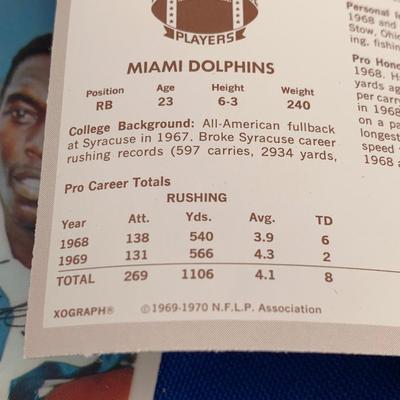
Clean, complete set of 60 3D NFL cards from the 70s from Kellogg's - some still even bound together. Buying “as is, as found” in this wonderful estate. NO BUYERS PREMIUMS OR CREDIT CARD FEES. All items start at just $10 and sell with NO RESERVE to the highest bidder. All bids are a binding contract to pay, pick-up, or request shipping and all sales are final. Any abandoned merchandise will be disposed of and purchase price not refunded, see complete “terms and conditions”. -
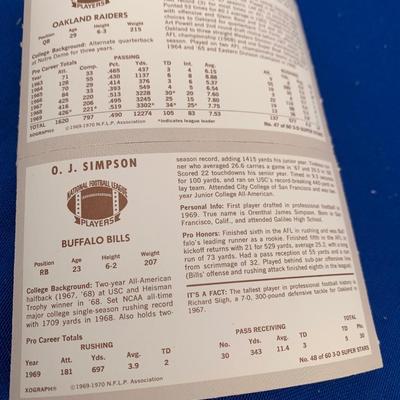
Clean, complete set of 60 3D NFL cards from the 70s from Kellogg's - some still even bound together. Buying “as is, as found” in this wonderful estate. NO BUYERS PREMIUMS OR CREDIT CARD FEES. All items start at just $10 and sell with NO RESERVE to the highest bidder. All bids are a binding contract to pay, pick-up, or request shipping and all sales are final. Any abandoned merchandise will be disposed of and purchase price not refunded, see complete “terms and conditions”. -

Clean, complete set of 60 3D NFL cards from the 70s from Kellogg's - some still even bound together. Buying “as is, as found” in this wonderful estate. NO BUYERS PREMIUMS OR CREDIT CARD FEES. All items start at just $10 and sell with NO RESERVE to the highest bidder. All bids are a binding contract to pay, pick-up, or request shipping and all sales are final. Any abandoned merchandise will be disposed of and purchase price not refunded, see complete “terms and conditions”. -
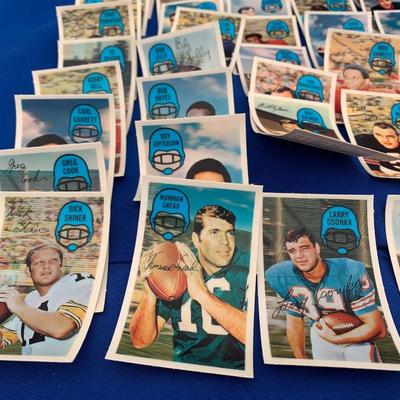
Clean, complete set of 60 3D NFL cards from the 70s from Kellogg's - some still even bound together. Buying “as is, as found” in this wonderful estate. NO BUYERS PREMIUMS OR CREDIT CARD FEES. All items start at just $10 and sell with NO RESERVE to the highest bidder. All bids are a binding contract to pay, pick-up, or request shipping and all sales are final. Any abandoned merchandise will be disposed of and purchase price not refunded, see complete “terms and conditions”. -
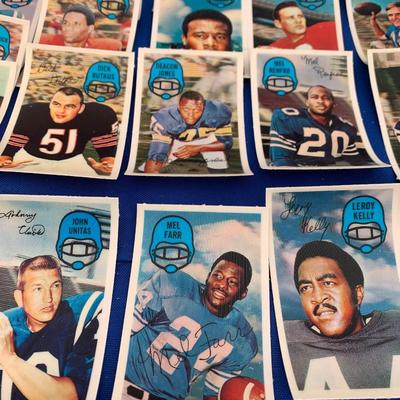
Clean, complete set of 60 3D NFL cards from the 70s from Kellogg's - some still even bound together. Buying “as is, as found” in this wonderful estate. NO BUYERS PREMIUMS OR CREDIT CARD FEES. All items start at just $10 and sell with NO RESERVE to the highest bidder. All bids are a binding contract to pay, pick-up, or request shipping and all sales are final. Any abandoned merchandise will be disposed of and purchase price not refunded, see complete “terms and conditions”. -
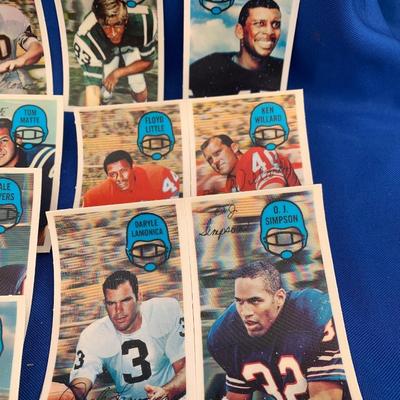
Clean, complete set of 60 3D NFL cards from the 70s from Kellogg's - some still even bound together. Buying “as is, as found” in this wonderful estate. NO BUYERS PREMIUMS OR CREDIT CARD FEES. All items start at just $10 and sell with NO RESERVE to the highest bidder. All bids are a binding contract to pay, pick-up, or request shipping and all sales are final. Any abandoned merchandise will be disposed of and purchase price not refunded, see complete “terms and conditions”. -
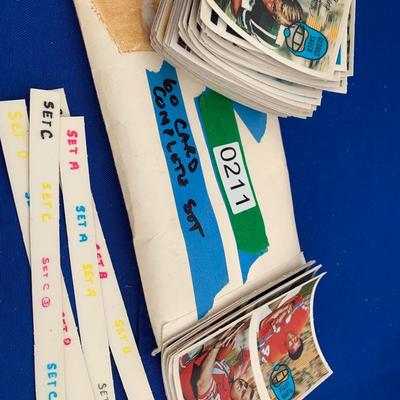
Clean, complete set of 60 3D NFL cards from the 70s from Kellogg's - some still even bound together. Buying “as is, as found” in this wonderful estate. NO BUYERS PREMIUMS OR CREDIT CARD FEES. All items start at just $10 and sell with NO RESERVE to the highest bidder. All bids are a binding contract to pay, pick-up, or request shipping and all sales are final. Any abandoned merchandise will be disposed of and purchase price not refunded, see complete “terms and conditions”. -
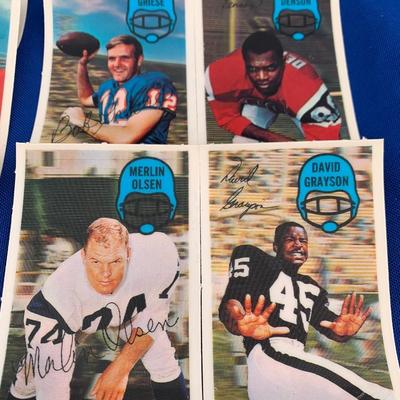
Clean, complete set of 60 3D NFL cards from the 70s from Kellogg's - some still even bound together. Buying “as is, as found” in this wonderful estate. NO BUYERS PREMIUMS OR CREDIT CARD FEES. All items start at just $10 and sell with NO RESERVE to the highest bidder. All bids are a binding contract to pay, pick-up, or request shipping and all sales are final. Any abandoned merchandise will be disposed of and purchase price not refunded, see complete “terms and conditions”. -
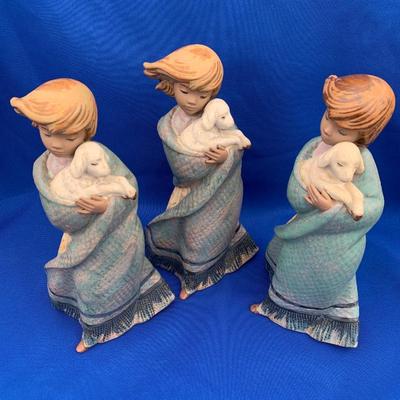
Buying “as is, as found” in this wonderful estate. NO BUYERS PREMIUMS OR CREDIT CARD FEES. All items start at just $10 and sell with NO RESERVE to the highest bidder. All bids are a binding contract to pay, pick-up, or request shipping and all sales are final. Any abandoned merchandise will be disposed of and purchase price not refunded, see complete “terms and conditions”. -
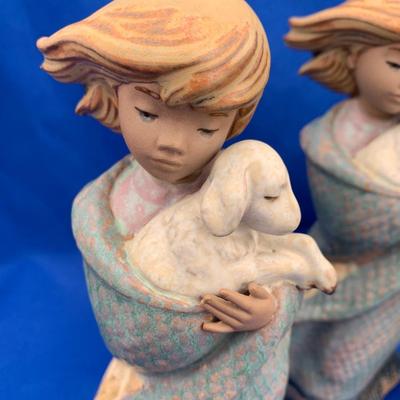
Buying “as is, as found” in this wonderful estate. NO BUYERS PREMIUMS OR CREDIT CARD FEES. All items start at just $10 and sell with NO RESERVE to the highest bidder. All bids are a binding contract to pay, pick-up, or request shipping and all sales are final. Any abandoned merchandise will be disposed of and purchase price not refunded, see complete “terms and conditions”. -
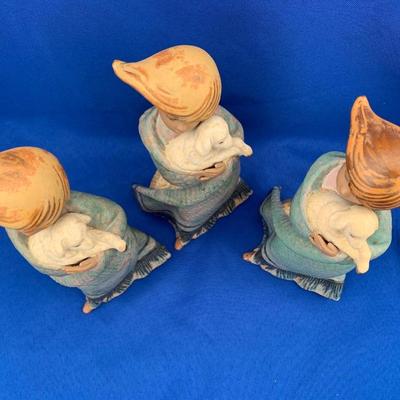
Buying “as is, as found” in this wonderful estate. NO BUYERS PREMIUMS OR CREDIT CARD FEES. All items start at just $10 and sell with NO RESERVE to the highest bidder. All bids are a binding contract to pay, pick-up, or request shipping and all sales are final. Any abandoned merchandise will be disposed of and purchase price not refunded, see complete “terms and conditions”. -
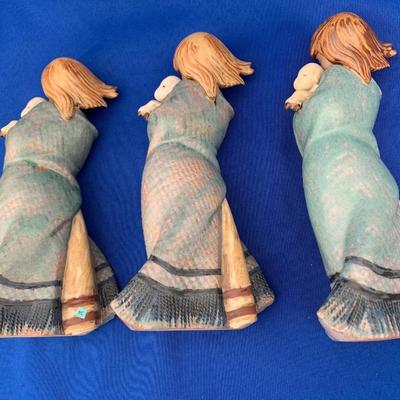
Buying “as is, as found” in this wonderful estate. NO BUYERS PREMIUMS OR CREDIT CARD FEES. All items start at just $10 and sell with NO RESERVE to the highest bidder. All bids are a binding contract to pay, pick-up, or request shipping and all sales are final. Any abandoned merchandise will be disposed of and purchase price not refunded, see complete “terms and conditions”. -
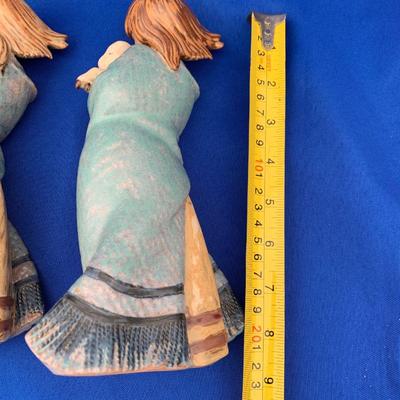
Buying “as is, as found” in this wonderful estate. NO BUYERS PREMIUMS OR CREDIT CARD FEES. All items start at just $10 and sell with NO RESERVE to the highest bidder. All bids are a binding contract to pay, pick-up, or request shipping and all sales are final. Any abandoned merchandise will be disposed of and purchase price not refunded, see complete “terms and conditions”. -
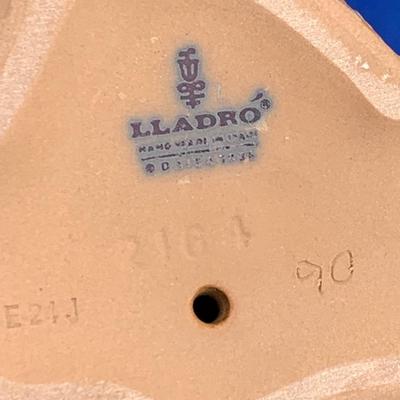
Buying “as is, as found” in this wonderful estate. NO BUYERS PREMIUMS OR CREDIT CARD FEES. All items start at just $10 and sell with NO RESERVE to the highest bidder. All bids are a binding contract to pay, pick-up, or request shipping and all sales are final. Any abandoned merchandise will be disposed of and purchase price not refunded, see complete “terms and conditions”. -
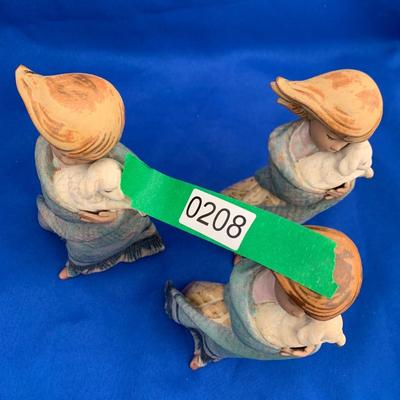
Buying “as is, as found” in this wonderful estate. NO BUYERS PREMIUMS OR CREDIT CARD FEES. All items start at just $10 and sell with NO RESERVE to the highest bidder. All bids are a binding contract to pay, pick-up, or request shipping and all sales are final. Any abandoned merchandise will be disposed of and purchase price not refunded, see complete “terms and conditions”. -
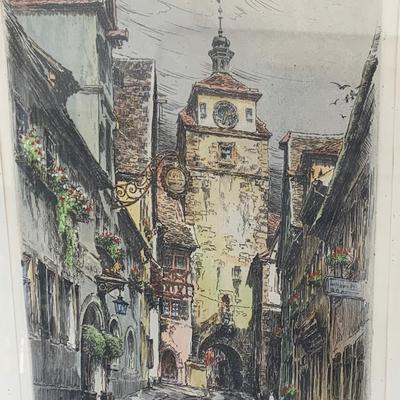
Signed In Pencil. Buying “as is, as found” in this wonderful estate. NO BUYERS PREMIUMS OR CREDIT CARD FEES. All items start at just $10 and sell with NO RESERVE to the highest bidder. All bids are a binding contract to pay, pick-up, or request shipping and all sales are final. Any abandoned merchandise will be disposed of and purchase price not refunded, see complete “terms and conditions”. -
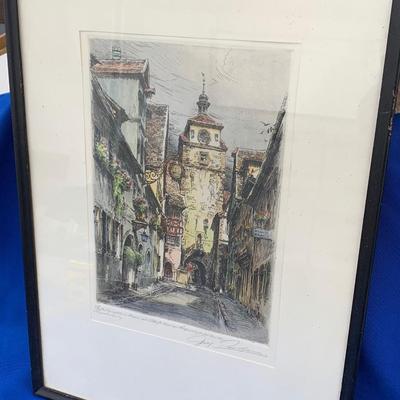
Signed In Pencil. Buying “as is, as found” in this wonderful estate. NO BUYERS PREMIUMS OR CREDIT CARD FEES. All items start at just $10 and sell with NO RESERVE to the highest bidder. All bids are a binding contract to pay, pick-up, or request shipping and all sales are final. Any abandoned merchandise will be disposed of and purchase price not refunded, see complete “terms and conditions”. -
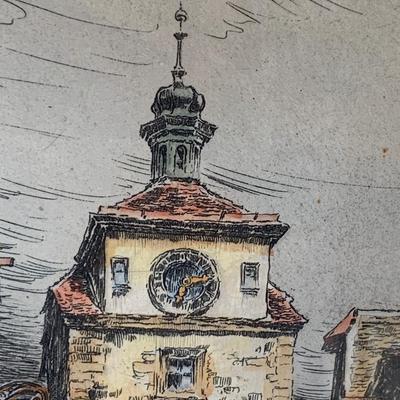
Signed In Pencil. Buying “as is, as found” in this wonderful estate. NO BUYERS PREMIUMS OR CREDIT CARD FEES. All items start at just $10 and sell with NO RESERVE to the highest bidder. All bids are a binding contract to pay, pick-up, or request shipping and all sales are final. Any abandoned merchandise will be disposed of and purchase price not refunded, see complete “terms and conditions”. -
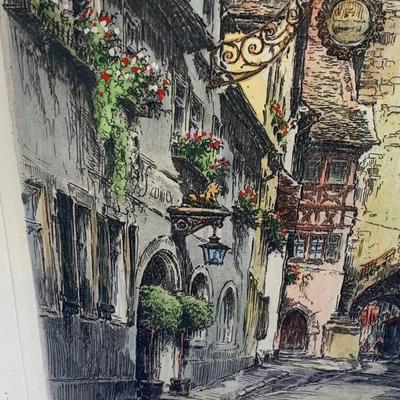
Signed In Pencil. Buying “as is, as found” in this wonderful estate. NO BUYERS PREMIUMS OR CREDIT CARD FEES. All items start at just $10 and sell with NO RESERVE to the highest bidder. All bids are a binding contract to pay, pick-up, or request shipping and all sales are final. Any abandoned merchandise will be disposed of and purchase price not refunded, see complete “terms and conditions”. -
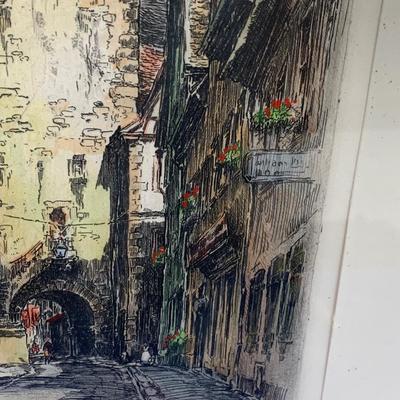
Signed In Pencil. Buying “as is, as found” in this wonderful estate. NO BUYERS PREMIUMS OR CREDIT CARD FEES. All items start at just $10 and sell with NO RESERVE to the highest bidder. All bids are a binding contract to pay, pick-up, or request shipping and all sales are final. Any abandoned merchandise will be disposed of and purchase price not refunded, see complete “terms and conditions”. -
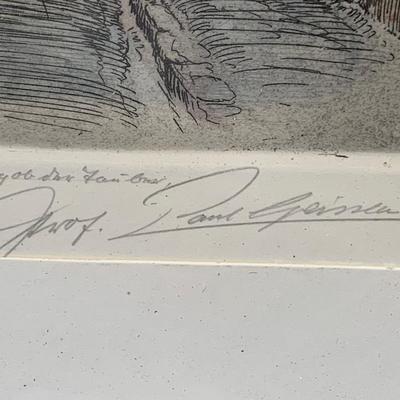
Signed In Pencil. Buying “as is, as found” in this wonderful estate. NO BUYERS PREMIUMS OR CREDIT CARD FEES. All items start at just $10 and sell with NO RESERVE to the highest bidder. All bids are a binding contract to pay, pick-up, or request shipping and all sales are final. Any abandoned merchandise will be disposed of and purchase price not refunded, see complete “terms and conditions”. -
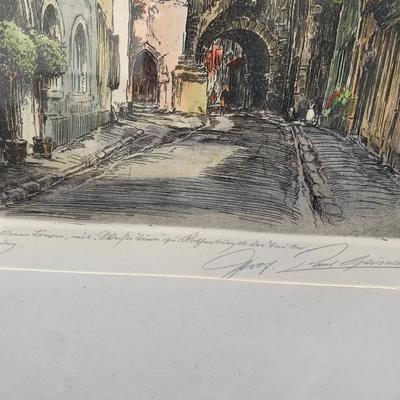
Signed In Pencil. Buying “as is, as found” in this wonderful estate. NO BUYERS PREMIUMS OR CREDIT CARD FEES. All items start at just $10 and sell with NO RESERVE to the highest bidder. All bids are a binding contract to pay, pick-up, or request shipping and all sales are final. Any abandoned merchandise will be disposed of and purchase price not refunded, see complete “terms and conditions”. -
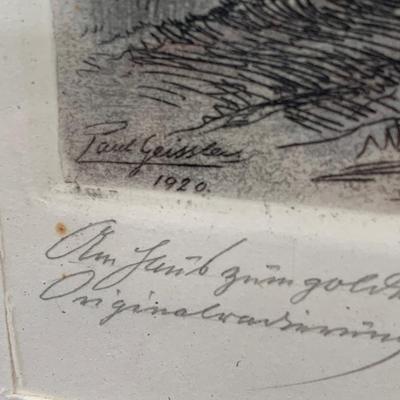
Signed In Pencil. Buying “as is, as found” in this wonderful estate. NO BUYERS PREMIUMS OR CREDIT CARD FEES. All items start at just $10 and sell with NO RESERVE to the highest bidder. All bids are a binding contract to pay, pick-up, or request shipping and all sales are final. Any abandoned merchandise will be disposed of and purchase price not refunded, see complete “terms and conditions”. -
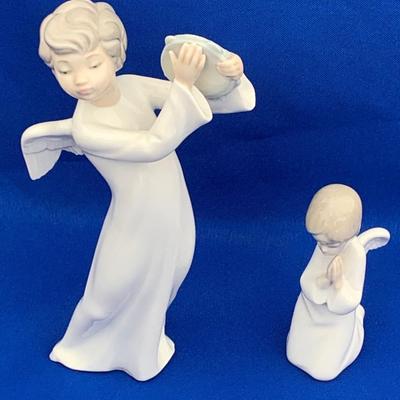
No chips, cracks or errors. High bid gets both. Buying “as is, as found” in this wonderful estate. NO BUYERS PREMIUMS OR CREDIT CARD FEES. All items start at just $10 and sell with NO RESERVE to the highest bidder. All bids are a binding contract to pay, pick-up, or request shipping and all sales are final. Any abandoned merchandise will be disposed of and purchase price not refunded, see complete “terms and conditions”. -
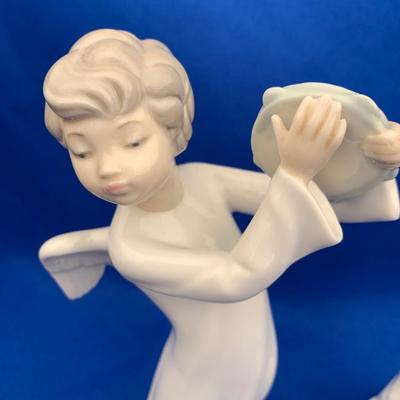
No chips, cracks or errors. High bid gets both. Buying “as is, as found” in this wonderful estate. NO BUYERS PREMIUMS OR CREDIT CARD FEES. All items start at just $10 and sell with NO RESERVE to the highest bidder. All bids are a binding contract to pay, pick-up, or request shipping and all sales are final. Any abandoned merchandise will be disposed of and purchase price not refunded, see complete “terms and conditions”. -
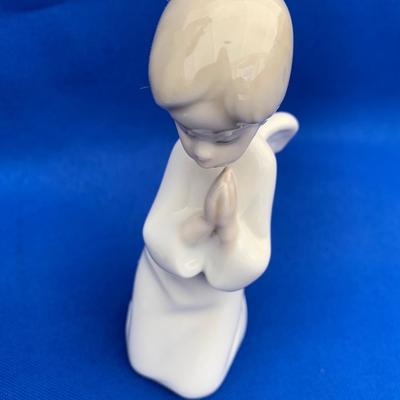
No chips, cracks or errors. High bid gets both. Buying “as is, as found” in this wonderful estate. NO BUYERS PREMIUMS OR CREDIT CARD FEES. All items start at just $10 and sell with NO RESERVE to the highest bidder. All bids are a binding contract to pay, pick-up, or request shipping and all sales are final. Any abandoned merchandise will be disposed of and purchase price not refunded, see complete “terms and conditions”. -
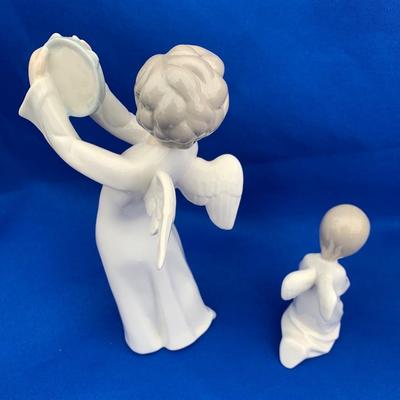
No chips, cracks or errors. High bid gets both. Buying “as is, as found” in this wonderful estate. NO BUYERS PREMIUMS OR CREDIT CARD FEES. All items start at just $10 and sell with NO RESERVE to the highest bidder. All bids are a binding contract to pay, pick-up, or request shipping and all sales are final. Any abandoned merchandise will be disposed of and purchase price not refunded, see complete “terms and conditions”. -

No chips, cracks or errors. High bid gets both. Buying “as is, as found” in this wonderful estate. NO BUYERS PREMIUMS OR CREDIT CARD FEES. All items start at just $10 and sell with NO RESERVE to the highest bidder. All bids are a binding contract to pay, pick-up, or request shipping and all sales are final. Any abandoned merchandise will be disposed of and purchase price not refunded, see complete “terms and conditions”. -
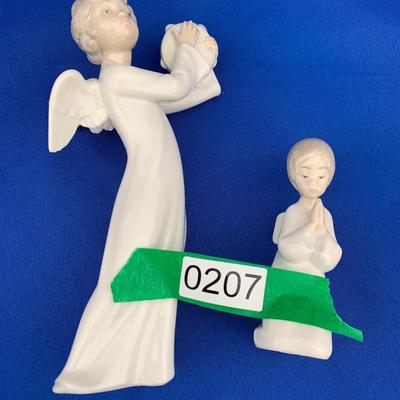
No chips, cracks or errors. High bid gets both. Buying “as is, as found” in this wonderful estate. NO BUYERS PREMIUMS OR CREDIT CARD FEES. All items start at just $10 and sell with NO RESERVE to the highest bidder. All bids are a binding contract to pay, pick-up, or request shipping and all sales are final. Any abandoned merchandise will be disposed of and purchase price not refunded, see complete “terms and conditions”. -
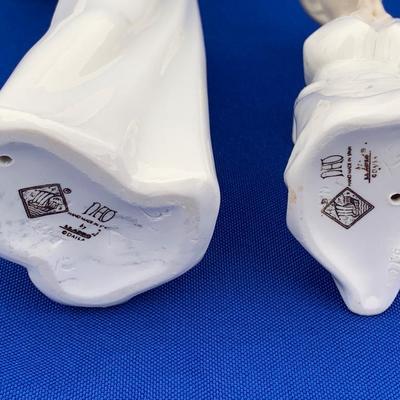
No chips, cracks or errors. High bid gets both. Buying “as is, as found” in this wonderful estate. NO BUYERS PREMIUMS OR CREDIT CARD FEES. All items start at just $10 and sell with NO RESERVE to the highest bidder. All bids are a binding contract to pay, pick-up, or request shipping and all sales are final. Any abandoned merchandise will be disposed of and purchase price not refunded, see complete “terms and conditions”. -
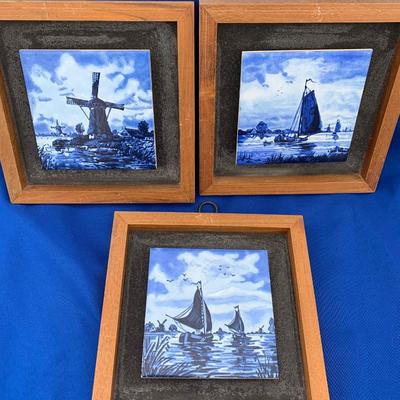
Buying “as is, as found” in this wonderful estate. NO BUYERS PREMIUMS OR CREDIT CARD FEES. All items start at just $10 and sell with NO RESERVE to the highest bidder. All bids are a binding contract to pay, pick-up, or request shipping and all sales are final. Any abandoned merchandise will be disposed of and purchase price not refunded, see complete “terms and conditions”. -
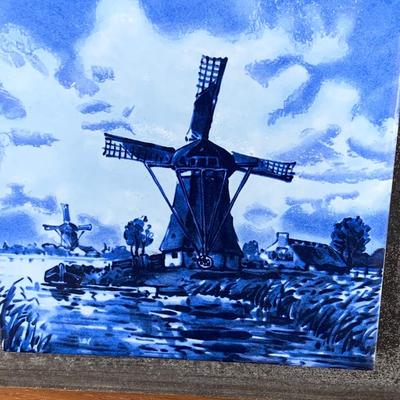
Buying “as is, as found” in this wonderful estate. NO BUYERS PREMIUMS OR CREDIT CARD FEES. All items start at just $10 and sell with NO RESERVE to the highest bidder. All bids are a binding contract to pay, pick-up, or request shipping and all sales are final. Any abandoned merchandise will be disposed of and purchase price not refunded, see complete “terms and conditions”. -
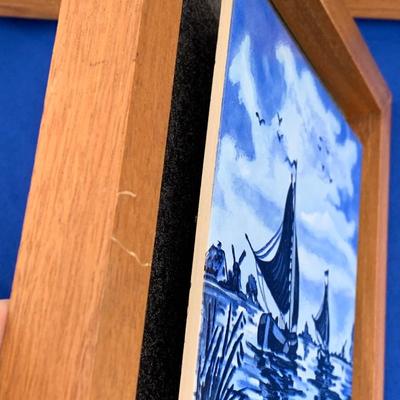
Buying “as is, as found” in this wonderful estate. NO BUYERS PREMIUMS OR CREDIT CARD FEES. All items start at just $10 and sell with NO RESERVE to the highest bidder. All bids are a binding contract to pay, pick-up, or request shipping and all sales are final. Any abandoned merchandise will be disposed of and purchase price not refunded, see complete “terms and conditions”. -
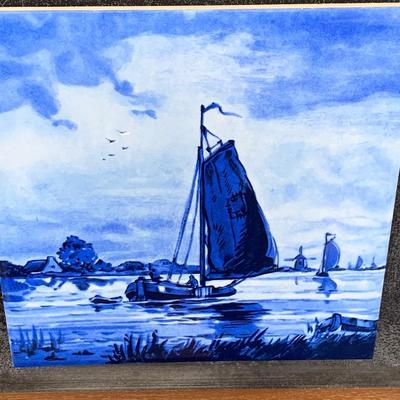
Buying “as is, as found” in this wonderful estate. NO BUYERS PREMIUMS OR CREDIT CARD FEES. All items start at just $10 and sell with NO RESERVE to the highest bidder. All bids are a binding contract to pay, pick-up, or request shipping and all sales are final. Any abandoned merchandise will be disposed of and purchase price not refunded, see complete “terms and conditions”. -
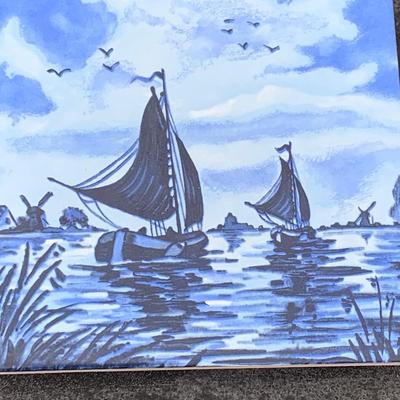
Buying “as is, as found” in this wonderful estate. NO BUYERS PREMIUMS OR CREDIT CARD FEES. All items start at just $10 and sell with NO RESERVE to the highest bidder. All bids are a binding contract to pay, pick-up, or request shipping and all sales are final. Any abandoned merchandise will be disposed of and purchase price not refunded, see complete “terms and conditions”. -
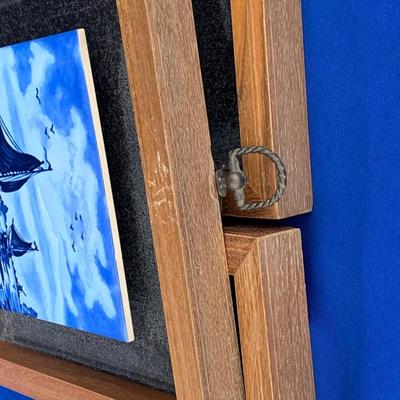
Buying “as is, as found” in this wonderful estate. NO BUYERS PREMIUMS OR CREDIT CARD FEES. All items start at just $10 and sell with NO RESERVE to the highest bidder. All bids are a binding contract to pay, pick-up, or request shipping and all sales are final. Any abandoned merchandise will be disposed of and purchase price not refunded, see complete “terms and conditions”. -

Buying “as is, as found” in this wonderful estate. NO BUYERS PREMIUMS OR CREDIT CARD FEES. All items start at just $10 and sell with NO RESERVE to the highest bidder. All bids are a binding contract to pay, pick-up, or request shipping and all sales are final. Any abandoned merchandise will be disposed of and purchase price not refunded, see complete “terms and conditions”. -
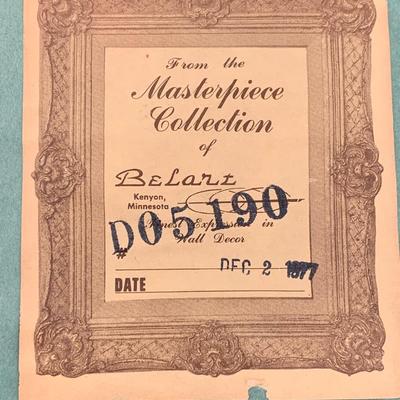
Buying “as is, as found” in this wonderful estate. NO BUYERS PREMIUMS OR CREDIT CARD FEES. All items start at just $10 and sell with NO RESERVE to the highest bidder. All bids are a binding contract to pay, pick-up, or request shipping and all sales are final. Any abandoned merchandise will be disposed of and purchase price not refunded, see complete “terms and conditions”. -
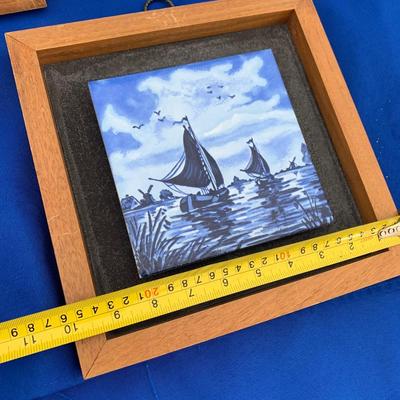
Buying “as is, as found” in this wonderful estate. NO BUYERS PREMIUMS OR CREDIT CARD FEES. All items start at just $10 and sell with NO RESERVE to the highest bidder. All bids are a binding contract to pay, pick-up, or request shipping and all sales are final. Any abandoned merchandise will be disposed of and purchase price not refunded, see complete “terms and conditions”. -
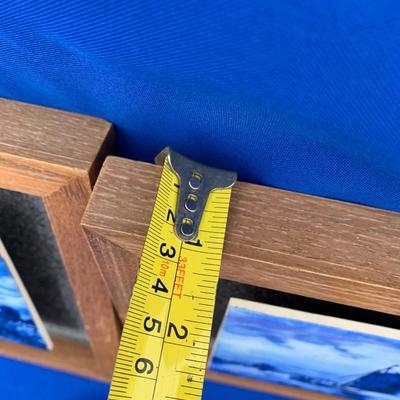
Buying “as is, as found” in this wonderful estate. NO BUYERS PREMIUMS OR CREDIT CARD FEES. All items start at just $10 and sell with NO RESERVE to the highest bidder. All bids are a binding contract to pay, pick-up, or request shipping and all sales are final. Any abandoned merchandise will be disposed of and purchase price not refunded, see complete “terms and conditions”. -

Buying “as is, as found” in this wonderful estate. NO BUYERS PREMIUMS OR CREDIT CARD FEES. All items start at just $10 and sell with NO RESERVE to the highest bidder. All bids are a binding contract to pay, pick-up, or request shipping and all sales are final. Any abandoned merchandise will be disposed of and purchase price not refunded, see complete “terms and conditions”. -
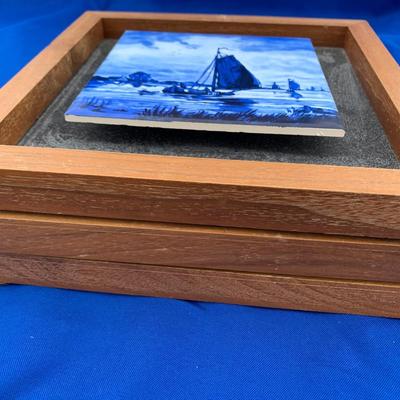
Buying “as is, as found” in this wonderful estate. NO BUYERS PREMIUMS OR CREDIT CARD FEES. All items start at just $10 and sell with NO RESERVE to the highest bidder. All bids are a binding contract to pay, pick-up, or request shipping and all sales are final. Any abandoned merchandise will be disposed of and purchase price not refunded, see complete “terms and conditions”. -
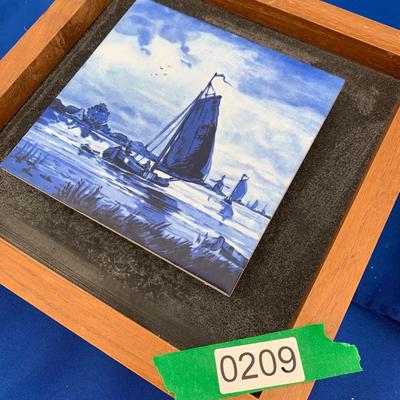
Buying “as is, as found” in this wonderful estate. NO BUYERS PREMIUMS OR CREDIT CARD FEES. All items start at just $10 and sell with NO RESERVE to the highest bidder. All bids are a binding contract to pay, pick-up, or request shipping and all sales are final. Any abandoned merchandise will be disposed of and purchase price not refunded, see complete “terms and conditions”. -
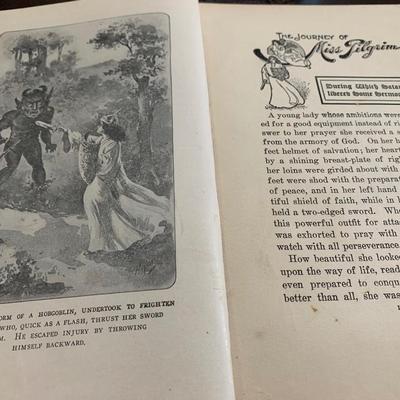
Book shows plenty of age/use wear. Buying “as is, as found” in this wonderful estate. NO BUYERS PREMIUMS OR CREDIT CARD FEES. All items start at just $10 and sell with NO RESERVE to the highest bidder. All bids are a binding contract to pay, pick-up, or request shipping and all sales are final. Any abandoned merchandise will be disposed of and purchase price not refunded, see complete “terms and conditions”. -
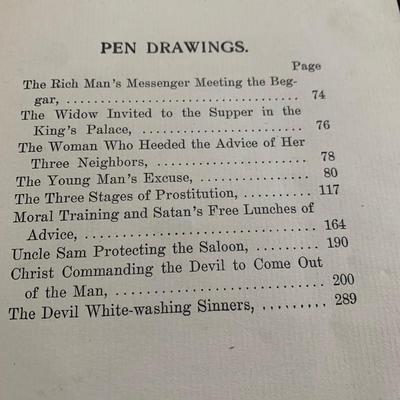
Book shows plenty of age/use wear. Buying “as is, as found” in this wonderful estate. NO BUYERS PREMIUMS OR CREDIT CARD FEES. All items start at just $10 and sell with NO RESERVE to the highest bidder. All bids are a binding contract to pay, pick-up, or request shipping and all sales are final. Any abandoned merchandise will be disposed of and purchase price not refunded, see complete “terms and conditions”. -
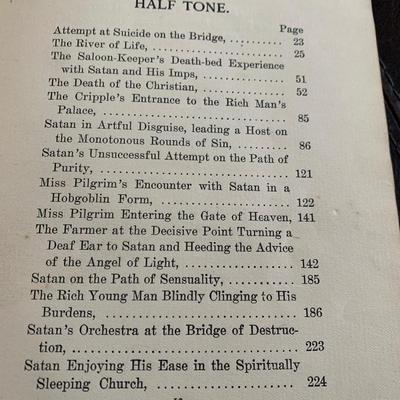
Book shows plenty of age/use wear. Buying “as is, as found” in this wonderful estate. NO BUYERS PREMIUMS OR CREDIT CARD FEES. All items start at just $10 and sell with NO RESERVE to the highest bidder. All bids are a binding contract to pay, pick-up, or request shipping and all sales are final. Any abandoned merchandise will be disposed of and purchase price not refunded, see complete “terms and conditions”. -
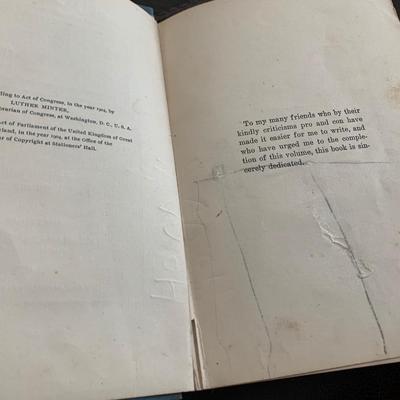
Book shows plenty of age/use wear. Buying “as is, as found” in this wonderful estate. NO BUYERS PREMIUMS OR CREDIT CARD FEES. All items start at just $10 and sell with NO RESERVE to the highest bidder. All bids are a binding contract to pay, pick-up, or request shipping and all sales are final. Any abandoned merchandise will be disposed of and purchase price not refunded, see complete “terms and conditions”. -

Book shows plenty of age/use wear. Buying “as is, as found” in this wonderful estate. NO BUYERS PREMIUMS OR CREDIT CARD FEES. All items start at just $10 and sell with NO RESERVE to the highest bidder. All bids are a binding contract to pay, pick-up, or request shipping and all sales are final. Any abandoned merchandise will be disposed of and purchase price not refunded, see complete “terms and conditions”. -
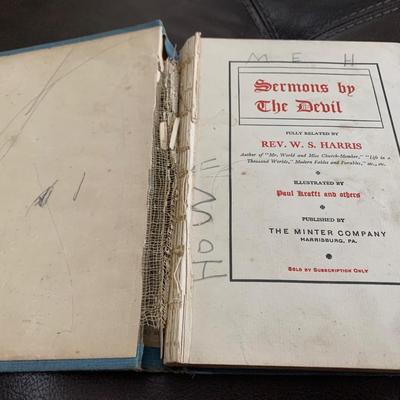
Book shows plenty of age/use wear. Buying “as is, as found” in this wonderful estate. NO BUYERS PREMIUMS OR CREDIT CARD FEES. All items start at just $10 and sell with NO RESERVE to the highest bidder. All bids are a binding contract to pay, pick-up, or request shipping and all sales are final. Any abandoned merchandise will be disposed of and purchase price not refunded, see complete “terms and conditions”. -
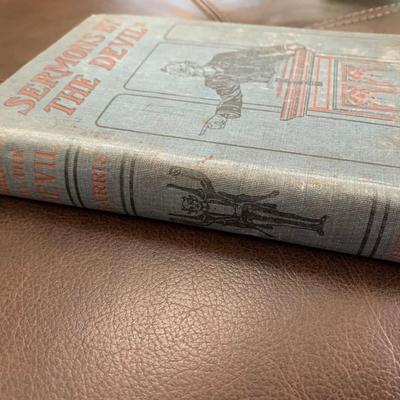
Book shows plenty of age/use wear. Buying “as is, as found” in this wonderful estate. NO BUYERS PREMIUMS OR CREDIT CARD FEES. All items start at just $10 and sell with NO RESERVE to the highest bidder. All bids are a binding contract to pay, pick-up, or request shipping and all sales are final. Any abandoned merchandise will be disposed of and purchase price not refunded, see complete “terms and conditions”. -
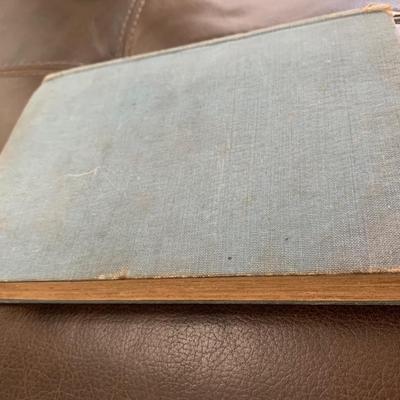
Book shows plenty of age/use wear. Buying “as is, as found” in this wonderful estate. NO BUYERS PREMIUMS OR CREDIT CARD FEES. All items start at just $10 and sell with NO RESERVE to the highest bidder. All bids are a binding contract to pay, pick-up, or request shipping and all sales are final. Any abandoned merchandise will be disposed of and purchase price not refunded, see complete “terms and conditions”. -
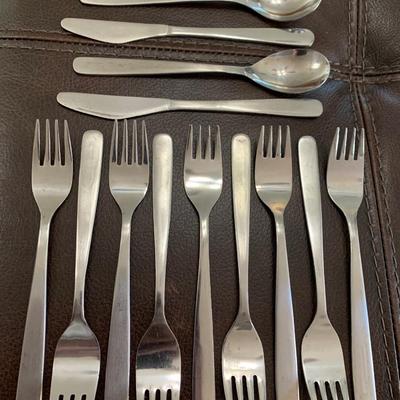
Buying “as is, as found” in this wonderful estate. NO BUYERS PREMIUMS OR CREDIT CARD FEES. All items start at just $10 and sell with NO RESERVE to the highest bidder. All bids are a binding contract to pay, pick-up, or request shipping and all sales are final. Any abandoned merchandise will be disposed of and purchase price not refunded, see complete “terms and conditions”. -
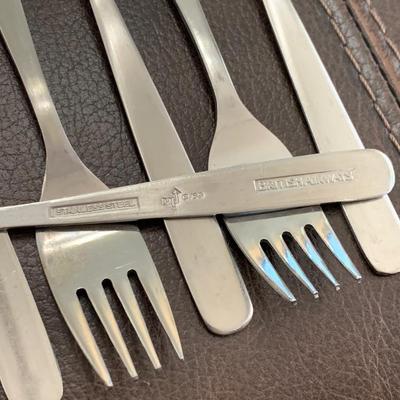
Buying “as is, as found” in this wonderful estate. NO BUYERS PREMIUMS OR CREDIT CARD FEES. All items start at just $10 and sell with NO RESERVE to the highest bidder. All bids are a binding contract to pay, pick-up, or request shipping and all sales are final. Any abandoned merchandise will be disposed of and purchase price not refunded, see complete “terms and conditions”. -

Buying “as is, as found” in this wonderful estate. NO BUYERS PREMIUMS OR CREDIT CARD FEES. All items start at just $10 and sell with NO RESERVE to the highest bidder. All bids are a binding contract to pay, pick-up, or request shipping and all sales are final. Any abandoned merchandise will be disposed of and purchase price not refunded, see complete “terms and conditions”. -
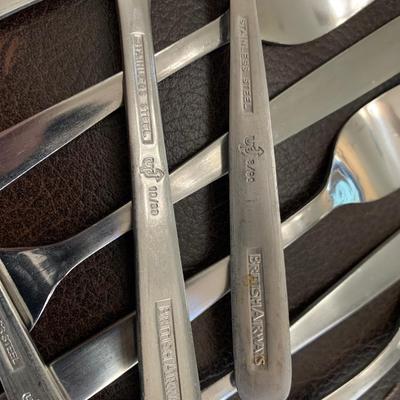
Buying “as is, as found” in this wonderful estate. NO BUYERS PREMIUMS OR CREDIT CARD FEES. All items start at just $10 and sell with NO RESERVE to the highest bidder. All bids are a binding contract to pay, pick-up, or request shipping and all sales are final. Any abandoned merchandise will be disposed of and purchase price not refunded, see complete “terms and conditions”. -
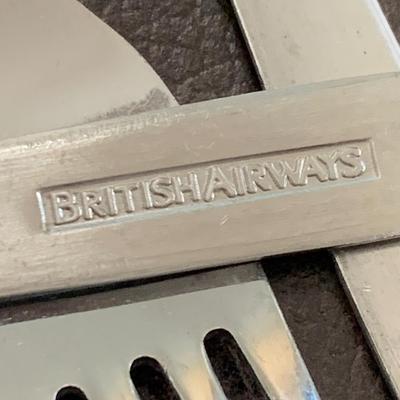
Buying “as is, as found” in this wonderful estate. NO BUYERS PREMIUMS OR CREDIT CARD FEES. All items start at just $10 and sell with NO RESERVE to the highest bidder. All bids are a binding contract to pay, pick-up, or request shipping and all sales are final. Any abandoned merchandise will be disposed of and purchase price not refunded, see complete “terms and conditions”. -
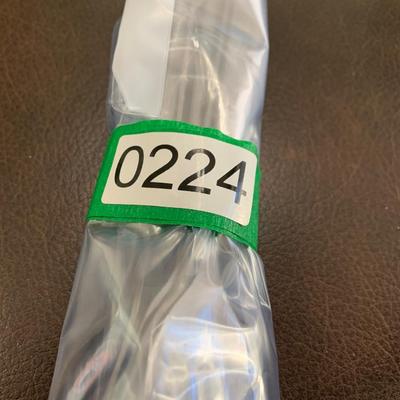
Buying “as is, as found” in this wonderful estate. NO BUYERS PREMIUMS OR CREDIT CARD FEES. All items start at just $10 and sell with NO RESERVE to the highest bidder. All bids are a binding contract to pay, pick-up, or request shipping and all sales are final. Any abandoned merchandise will be disposed of and purchase price not refunded, see complete “terms and conditions”. -

In original shipping envelope from Gun Collectors Album. Another rare set of vintage art from this lifelong collector of western memorabilia. Buying “as is, as found” in this wonderful estate. NO BUYERS PREMIUMS OR CREDIT CARD FEES. All items start at just $10 and sell with NO RESERVE to the highest bidder. All bids are a binding contract to pay, pick-up, or request shipping and all sales are final. Any abandoned merchandise will be disposed of and purchase price not refunded, see complete “terms and conditions”. For those wanting this item shipped - in many cases - we will need to roll and tube it for delivery. Buyer pays shipping & insurance. -
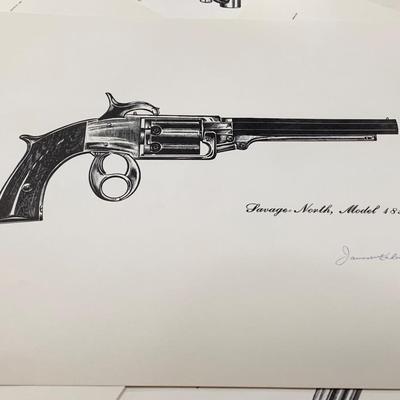
In original shipping envelope from Gun Collectors Album. Another rare set of vintage art from this lifelong collector of western memorabilia. Buying “as is, as found” in this wonderful estate. NO BUYERS PREMIUMS OR CREDIT CARD FEES. All items start at just $10 and sell with NO RESERVE to the highest bidder. All bids are a binding contract to pay, pick-up, or request shipping and all sales are final. Any abandoned merchandise will be disposed of and purchase price not refunded, see complete “terms and conditions”. For those wanting this item shipped - in many cases - we will need to roll and tube it for delivery. Buyer pays shipping & insurance. -
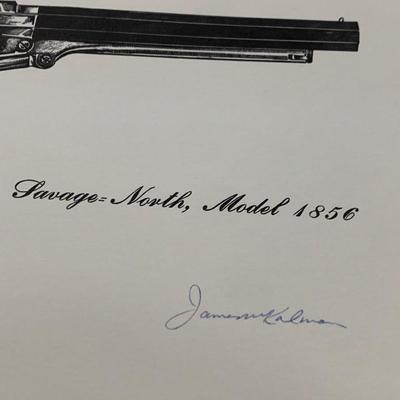
In original shipping envelope from Gun Collectors Album. Another rare set of vintage art from this lifelong collector of western memorabilia. Buying “as is, as found” in this wonderful estate. NO BUYERS PREMIUMS OR CREDIT CARD FEES. All items start at just $10 and sell with NO RESERVE to the highest bidder. All bids are a binding contract to pay, pick-up, or request shipping and all sales are final. Any abandoned merchandise will be disposed of and purchase price not refunded, see complete “terms and conditions”. For those wanting this item shipped - in many cases - we will need to roll and tube it for delivery. Buyer pays shipping & insurance. -
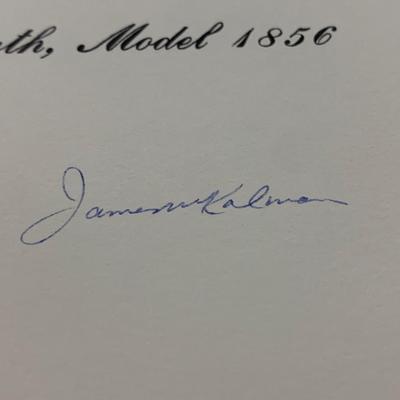
In original shipping envelope from Gun Collectors Album. Another rare set of vintage art from this lifelong collector of western memorabilia. Buying “as is, as found” in this wonderful estate. NO BUYERS PREMIUMS OR CREDIT CARD FEES. All items start at just $10 and sell with NO RESERVE to the highest bidder. All bids are a binding contract to pay, pick-up, or request shipping and all sales are final. Any abandoned merchandise will be disposed of and purchase price not refunded, see complete “terms and conditions”. For those wanting this item shipped - in many cases - we will need to roll and tube it for delivery. Buyer pays shipping & insurance. -
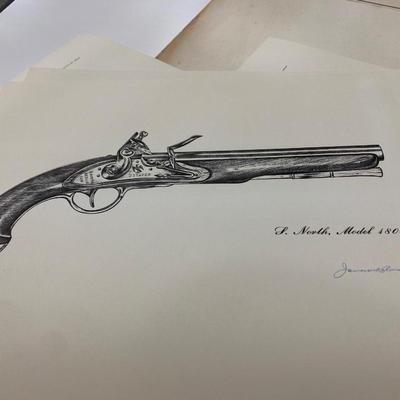
In original shipping envelope from Gun Collectors Album. Another rare set of vintage art from this lifelong collector of western memorabilia. Buying “as is, as found” in this wonderful estate. NO BUYERS PREMIUMS OR CREDIT CARD FEES. All items start at just $10 and sell with NO RESERVE to the highest bidder. All bids are a binding contract to pay, pick-up, or request shipping and all sales are final. Any abandoned merchandise will be disposed of and purchase price not refunded, see complete “terms and conditions”. For those wanting this item shipped - in many cases - we will need to roll and tube it for delivery. Buyer pays shipping & insurance. -
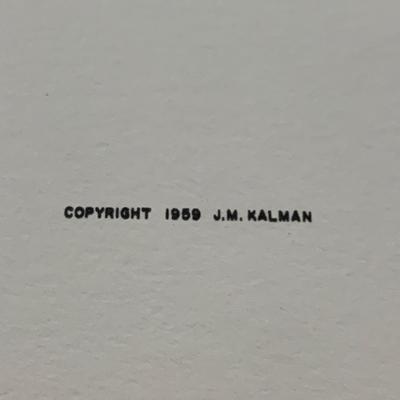
In original shipping envelope from Gun Collectors Album. Another rare set of vintage art from this lifelong collector of western memorabilia. Buying “as is, as found” in this wonderful estate. NO BUYERS PREMIUMS OR CREDIT CARD FEES. All items start at just $10 and sell with NO RESERVE to the highest bidder. All bids are a binding contract to pay, pick-up, or request shipping and all sales are final. Any abandoned merchandise will be disposed of and purchase price not refunded, see complete “terms and conditions”. For those wanting this item shipped - in many cases - we will need to roll and tube it for delivery. Buyer pays shipping & insurance. -
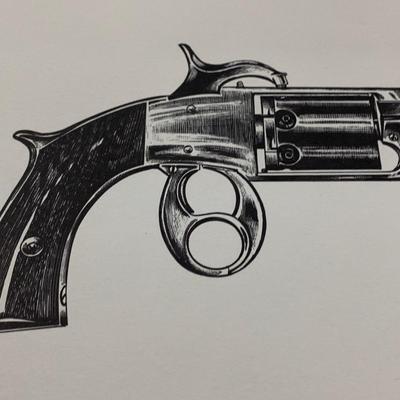
In original shipping envelope from Gun Collectors Album. Another rare set of vintage art from this lifelong collector of western memorabilia. Buying “as is, as found” in this wonderful estate. NO BUYERS PREMIUMS OR CREDIT CARD FEES. All items start at just $10 and sell with NO RESERVE to the highest bidder. All bids are a binding contract to pay, pick-up, or request shipping and all sales are final. Any abandoned merchandise will be disposed of and purchase price not refunded, see complete “terms and conditions”. For those wanting this item shipped - in many cases - we will need to roll and tube it for delivery. Buyer pays shipping & insurance. -

In original shipping envelope from Gun Collectors Album. Another rare set of vintage art from this lifelong collector of western memorabilia. Buying “as is, as found” in this wonderful estate. NO BUYERS PREMIUMS OR CREDIT CARD FEES. All items start at just $10 and sell with NO RESERVE to the highest bidder. All bids are a binding contract to pay, pick-up, or request shipping and all sales are final. Any abandoned merchandise will be disposed of and purchase price not refunded, see complete “terms and conditions”. For those wanting this item shipped - in many cases - we will need to roll and tube it for delivery. Buyer pays shipping & insurance. -
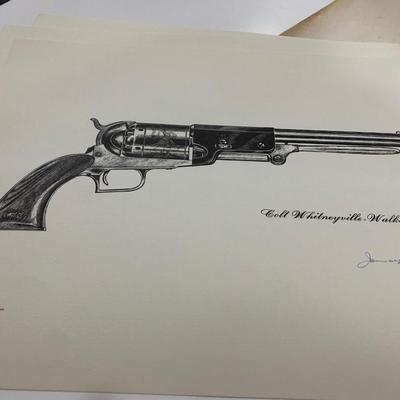
In original shipping envelope from Gun Collectors Album. Another rare set of vintage art from this lifelong collector of western memorabilia. Buying “as is, as found” in this wonderful estate. NO BUYERS PREMIUMS OR CREDIT CARD FEES. All items start at just $10 and sell with NO RESERVE to the highest bidder. All bids are a binding contract to pay, pick-up, or request shipping and all sales are final. Any abandoned merchandise will be disposed of and purchase price not refunded, see complete “terms and conditions”. For those wanting this item shipped - in many cases - we will need to roll and tube it for delivery. Buyer pays shipping & insurance. -
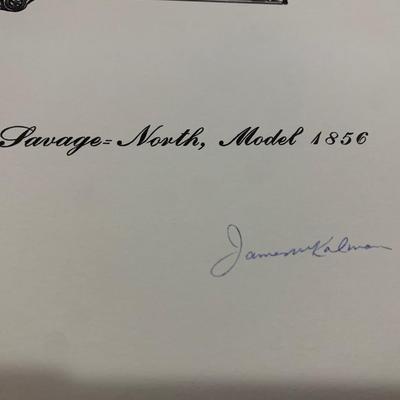
In original shipping envelope from Gun Collectors Album. Another rare set of vintage art from this lifelong collector of western memorabilia. Buying “as is, as found” in this wonderful estate. NO BUYERS PREMIUMS OR CREDIT CARD FEES. All items start at just $10 and sell with NO RESERVE to the highest bidder. All bids are a binding contract to pay, pick-up, or request shipping and all sales are final. Any abandoned merchandise will be disposed of and purchase price not refunded, see complete “terms and conditions”. For those wanting this item shipped - in many cases - we will need to roll and tube it for delivery. Buyer pays shipping & insurance. -
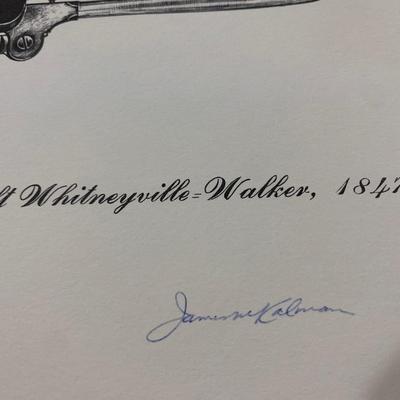
In original shipping envelope from Gun Collectors Album. Another rare set of vintage art from this lifelong collector of western memorabilia. Buying “as is, as found” in this wonderful estate. NO BUYERS PREMIUMS OR CREDIT CARD FEES. All items start at just $10 and sell with NO RESERVE to the highest bidder. All bids are a binding contract to pay, pick-up, or request shipping and all sales are final. Any abandoned merchandise will be disposed of and purchase price not refunded, see complete “terms and conditions”. For those wanting this item shipped - in many cases - we will need to roll and tube it for delivery. Buyer pays shipping & insurance. -
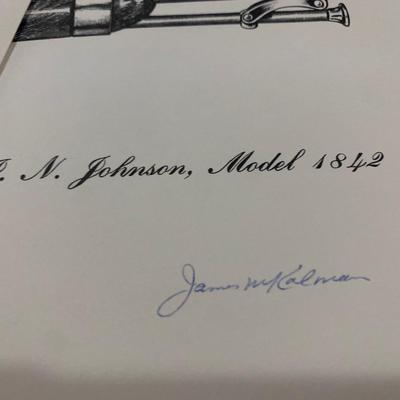
In original shipping envelope from Gun Collectors Album. Another rare set of vintage art from this lifelong collector of western memorabilia. Buying “as is, as found” in this wonderful estate. NO BUYERS PREMIUMS OR CREDIT CARD FEES. All items start at just $10 and sell with NO RESERVE to the highest bidder. All bids are a binding contract to pay, pick-up, or request shipping and all sales are final. Any abandoned merchandise will be disposed of and purchase price not refunded, see complete “terms and conditions”. For those wanting this item shipped - in many cases - we will need to roll and tube it for delivery. Buyer pays shipping & insurance. -
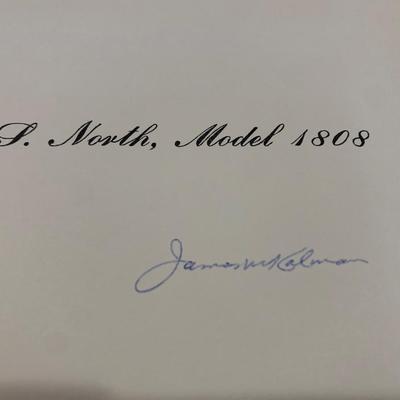
In original shipping envelope from Gun Collectors Album. Another rare set of vintage art from this lifelong collector of western memorabilia. Buying “as is, as found” in this wonderful estate. NO BUYERS PREMIUMS OR CREDIT CARD FEES. All items start at just $10 and sell with NO RESERVE to the highest bidder. All bids are a binding contract to pay, pick-up, or request shipping and all sales are final. Any abandoned merchandise will be disposed of and purchase price not refunded, see complete “terms and conditions”. For those wanting this item shipped - in many cases - we will need to roll and tube it for delivery. Buyer pays shipping & insurance. -

In original shipping envelope from Gun Collectors Album. Another rare set of vintage art from this lifelong collector of western memorabilia. Buying “as is, as found” in this wonderful estate. NO BUYERS PREMIUMS OR CREDIT CARD FEES. All items start at just $10 and sell with NO RESERVE to the highest bidder. All bids are a binding contract to pay, pick-up, or request shipping and all sales are final. Any abandoned merchandise will be disposed of and purchase price not refunded, see complete “terms and conditions”. For those wanting this item shipped - in many cases - we will need to roll and tube it for delivery. Buyer pays shipping & insurance.
Advertisement


